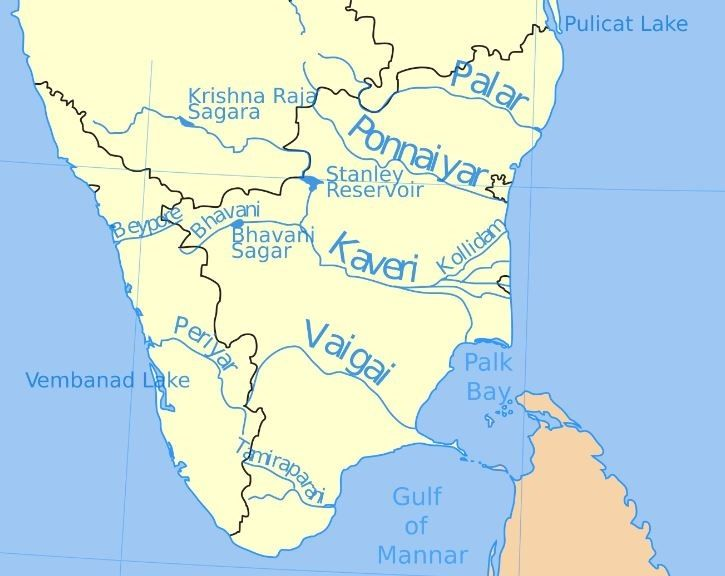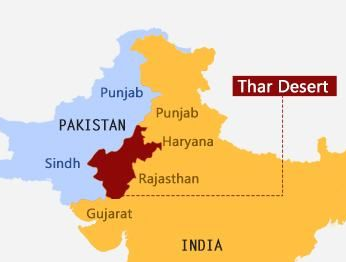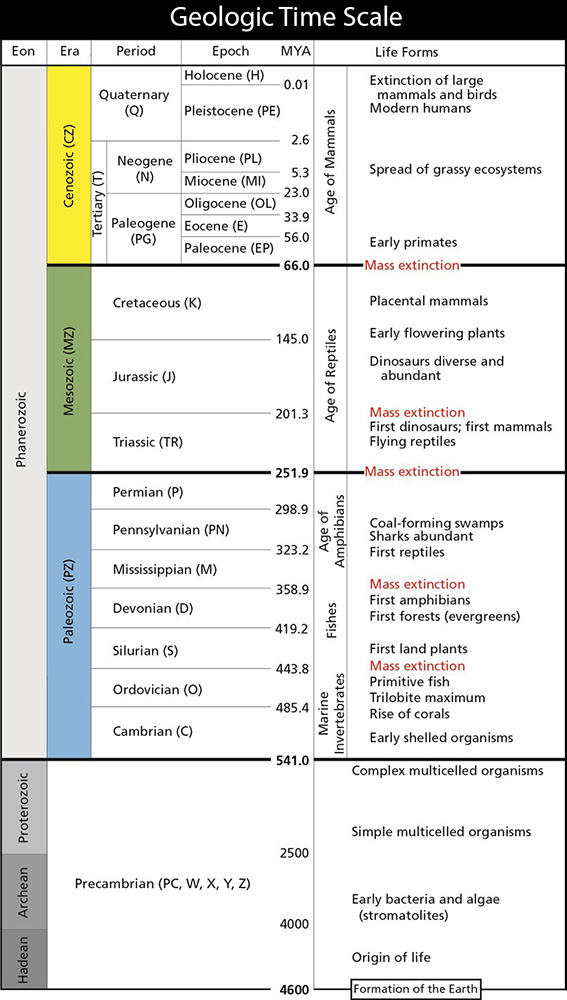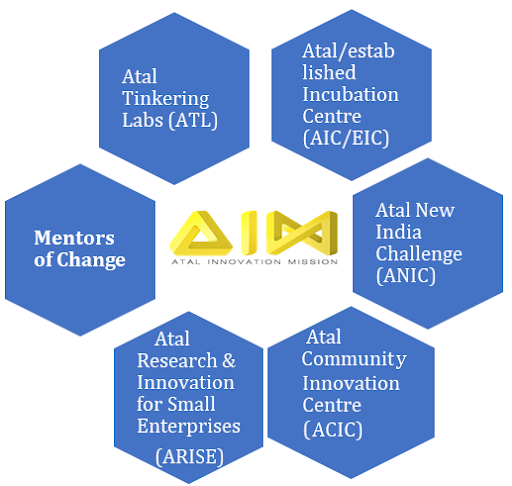Lunar Science Workshop 2021: ISRO
Why in News
Recently, the Lunar Science Workshop 2021, was conducted by Indian Space Research Organisation (ISRO) to commemorate the completion of two years of operation of Chandrayaan-2 orbiter in lunar orbit.
- According to the ISRO, the observations of the Chandrayaan-2 orbiter payloads have yielded discovery-class findings .
- The Chandrayaan-3 mission is likely to be launched late next year.
Key Points
- About the Chandrayaan-2:
- Lunar Exploration: It is the second spacecraft in the Indian series of Lunar exploration satellites.
- It comprised an orbiter, lander named Vikram and rover named Pragyan to explore the unexplored South Polar region of the Moon.
- Launch: It was launched on 22nd July, 2019 from the Sriharikota spaceport by GSLV Mk-III.
- It was inserted into a lunar orbit in August, 2019.
- The orbiter and lander modules were separated as two independent satellites in September, 2019.
- Failure of Lander: Vikram lander's descent was as planned and normal performance was observed up to an altitude of 2.1 km from Lunar surface in September, 2019.
- Subsequently, communication from the lander was lost and the lander had a hard landing on the lunar surface.
- The six-wheeled Pragyan rover was accommodated inside the Vikram lander.
- A successful soft-landing would have made India the fourth country after the erstwhile Soviet Union, the United States, and China to do so.
- Subsequently, communication from the lander was lost and the lander had a hard landing on the lunar surface.
- Role of Orbiter: The orbiter, placed in its intended orbit around the Moon, provided the understanding of the Moon's evolution and mapping of minerals and water molecules in polar regions, using its eight advanced scientific instruments.
- The precise launch and optimised mission management have ensured a long life of almost seven years for the orbiter instead of the planned one year.
- Lunar Exploration: It is the second spacecraft in the Indian series of Lunar exploration satellites.
- Findings of Chandrayaan-2 Orbiter:
- Detection of Argon-40: The mass spectrometer CHandra's Atmospheric Compositional Explorer 2 (CHACE 2) conducted first-ever in-situ study of the composition of the lunar neutral exosphere from a polar orbital platform.
- It detected and studied the variability of the Argon-40 at the middle and higher latitudes of the Moon, depicting the radiogenic activities in the mid and higher latitudes of the Lunar interior.
- Detection of Chromium and Manganese: Chandrayaan-2 Large Area Soft X-ray Spectrometer (CLASS) payload has detected minor elements of chromium and manganese through remote sensing.
- Observations of Microflares of the Sun: The observations of microflares of the Sun, during the quiet-Sun period, which provide important clues on the coronal heating problem of the Sun, were made by the Solar X-ray Monitor (XSM) payload.
- Detection of the Hydration Features: The first-ever unambiguous detection of the hydration features of the Moon was achieved by Chandrayaan-2 with its Imaging Infra-Red Spectrometer (IIRS) payload, which captured clear signatures of Hydroxyl and water-ice on the lunar surface.
- Detection of the Subsurface Water-ice: The Dual Frequency Synthetic Aperture Radar (DFSAR) instrument detected signatures of the subsurface water-ice, and achieved high resolution mapping of the lunar morphological features in the polar regions.
- Imaging the Moon: Imaging the moon from 100 km lunar orbit with "best-ever" achieved resolution of 25 cm with its Orbiter High Resolution Camera (OHRC).
- Geological Findings: The Terrain Mapping Camera (TMC 2) of Chandrayaan-2, which is conducting imaging of the Moon at a global scale, has found interesting geologic signatures of lunar crustal shortening, and identification of volcanic domes.
- Study of Moon's Ionosphere: The Dual Frequency Radio Science (DFRS) experiment onboard Chandrayaan-2 has studied the ionosphere of the Moon, which is generated by the solar photo-ionisation of the neutral species of the lunar exosphere.
- Detection of Argon-40: The mass spectrometer CHandra's Atmospheric Compositional Explorer 2 (CHACE 2) conducted first-ever in-situ study of the composition of the lunar neutral exosphere from a polar orbital platform.
Note:
- The ‘PRADAN’ portal is hosted by Indian Space Science Data Centre (ISSDC), the nodal centre of data archive for ISRO missions.
- The data from the Chandrayaan-2 mission is being released for the wider public use through the PRADAN portal.
Creating Methanol from Coal
Why in News
Recently, the first Indigenously Designed High Ash Coal Gasification Based Methanol Production Plant has been opened in Hyderabad.
- With this, Government owned engineering firm BHEL (Bharat Heavy Electricals Limited) has successfully demonstrated a facility to create methanol from high ash Indian coal.
Key Points
- About:
- Methanol is utilized as a motor fuel, to power ship engines, and to generate clean power all over the world. However, the majority of worldwide methanol production is derived from natural gas, which is a relatively easy process.
- Since India doesn’t have much of the natural gas reserves, producing methanol from imported natural gas leads to outflow of foreign exchange and is uneconomical because of higher prices.
- The next best option is to utilise India's abundant coal. However, due to the high ash percentage of Indian coal, most internationally accessible technology will not be adequate.
- To address this issue, BHEL successfully demonstrated a facility to create 0.25 TPD (Ton per Day) Methanol from high ash Indian coal using a 1.2 TPD Fluidized bed gasifier.
- The methanol purity of the crude methanol produced is between 98 and 99.5%.
- This is part of NITI Aayog's 'Methanol Economy' programme that is aimed at reducing India's oil import bill, greenhouse gas (GHG) emissions, and converting coal reserves and municipal solid waste into methanol.
- Also this in-house capability will assist India's coal gasification mission and coal-to-hydrogen production for Hydrogen Mission.
- NITI Aayog’s Methanol Economy Programme:
- About Methanol: Methanol is a low carbon, hydrogen carrier fuel produced from high ash coal, agricultural residue, CO2 from thermal power plants and natural gas. It is the best pathway for meeting India’s commitment to COP 21 (Paris Agreement).
- Methanol vis-a-vis-Petrol and Diesel: Although slightly lower in energy content than petrol and diesel, methanol can replace both these fuels in the transport sector (road, rail and marine), energy sector (comprising boilers, process heating modules, tractors and commercial vehicles) and retail cooking (replacing LPG [partially], kerosene and wood charcoal).
- Environmental and Economic Impact:
- Blending of 15% methanol in gasoline can result in at least 15% reduction in the import of gasoline/crude oil. In addition, this would bring down GHG emissions by 20% in terms of particulate matter, NOx, and SOx, thereby improving the urban air quality.
- The Methanol Economy will also create close to 5 million jobs through methanol production/application and distribution services.
- Additionally, Rs 6000 crore can be saved annually by blending 20% DME (Di-methyl Ether, a derivative of methanol) in LPG. This will help the consumer in saving between Rs 50-100 per cylinder.
- Initiatives Taken:
- The Bureau of Indian Standards has notified 20% DME blending with LPG, and a notification for M-15, M-85, M-100 blends has been issued by the Ministry of Road, Transport and Highways.
- In October 2018, Assam Petrochemicals launched Asia’s first canister-based methanol cooking fuel programme. This initiative is in line with the Prime Minister’s vision of striving towards the provision of a clean, cost-effective and pollution-free cooking medium.
- Five methanol plants based on high ash coal, five DME plants, and one natural gas-based methanol production plant with a capacity of 20 MMT/annum, in a joint venture with Israel, have been planned to be set up.
- Three boats and seven cargo vessels are being built by the Cochin Shipyard Limited for Inland Waterways Authority of India to use methanol as a marine fuel.
Way Forward
- India, with 125 Billion Tonnes of proven Coal reserves and 500 million tonnes of Biomass generated every year has a huge potential for ensuring energy security based on alternate feedstock and fuels.
- However, Methanol does not get the same attention from the government as EV (Electric Vehicles), even though the former can come in faster. There is significant work needed to implement the Methanol Economy holistically.
- The development of methanol based technology can turn energy-importing India into an energy exporting country.
Transport and Marketing Assistance Scheme
Why in News
Recently, the Ministry of Commerce and Industry has revised the Transport and Marketing Assistance (TMA) scheme for specified agriculture products.
- It will be effected on or after 1st April, 2021, up to 31st March, 2022.
Key Points
- About:
- It was launched in 2019, for providing financial assistance for the transport and marketing of agricultural products to boost exports of such commodities to certain countries in Europe and North America.
- In the year 2018, the government approved an Agriculture Export Policy with an aim to double the shipments to USD 60 billion by 2022.
- APEDA (Agricultural and Processed Food Products Export Development Authority) works towards expanding the export potential of Indian agricultural and food products.
- Under the TMA, the government reimburses a certain portion of freight charges and provides assistance for the marketing of agricultural produce.
- The assistance, at notified rates, will be available for export of eligible agriculture products to the permissible countries, as specified from time to time.
- The revised scheme has included dairy products among other agriculture products in its purview and increased the rates of assistance.
- Rates of assistance have been increased, by 50% for exports by sea and 100% through the air.
- TMA would be reimbursed through the Regional Authorities of DGFT (Directorate General of Foreign Trade).
- It was launched in 2019, for providing financial assistance for the transport and marketing of agricultural products to boost exports of such commodities to certain countries in Europe and North America.
- Objective:
- To provide assistance for the international component of freight and marketing of agricultural produce.
- To mitigate the disadvantage of higher cost of transportation of export of specified agriculture products due to trans-shipment.
- To promote brand recognition for Indian agricultural products in the specified overseas markets.
Agriculture Export Policy 2018
- The vision of Agriculture Export Policy is to harness the export potential of Indian agriculture, through suitable policy instruments, to make India global power in agriculture and raise farmers income.
- The Policy was approved with the objective,
- To diversify the export basket, destinations and boost high value and value-added agricultural exports including a focus on perishables.
- To promote novel, indigenous, organic, ethnic, traditional and non-traditional Agri products exports.
- To provide an institutional mechanism for pursuing market access, tackling barriers and dealing with sanitary and phytosanitary issues.
- Enable farmers to get the benefit of export opportunities in the overseas market.
Agricultural and Processed Food Products Export Development Authority
- APEDA is a non-trading, statutory body established by the Government of India under the Agricultural and Processed Food Products Export Development Authority Act passed by the Parliament in December, 1985.
- It functions under the Ministry of Commerce and Industry. The Authority has its headquarters in New Delhi.
- It has been mandated with the responsibility of export promotion and development of the scheduled products viz. fruits, vegetables, meat products, dairy products, alcoholic and non-alcoholic beverages etc.
- It has also been entrusted with the responsibility to monitor import of sugar.
- In 2017, APEDA launched a mobile app- “Farmer Connect” to allow farmers to apply online to facilitate their farm registration, tracking the status of application & approvals by State Government and Lab sampling by authorized Laboratories.
Thamirabarani Civilisation: Tamil Nadu
Why in News
The Thamirabarani civilisation in Tamil Nadu is at least 3,200 years old, reveals carbon dating done on organic material retrieved from archeological excavations in Sivakalai, Thoothukudi district.
- Carbon Dating: The determination of the age or date of organic matter from the relative proportions of the carbon isotopes carbon-12 and carbon-14 that it contains.
Key Points
- Thamirabarani River:
- The shortest river in the state (Tamil Nadu), the Thamirabarani starts in Pothigai hills of the Western Ghats in the Ambasamudram taluk, flows through Tirunelveli and Thoothukudi districts and empties at Korkai (Tirunelveli district) into the Gulf of Mannar (Bay of Bengal).
- Significance of the Findings:
- It could lead to evidence that there was a city civilisation (Porunai River (Thamirabarani) civilization) in south India as long back as 3,200 years ago, the later part of the Indus Valley Civilisation.
- Also, archaeological excavations would be carried out in other States and countries in search of Tamil roots.
- In the first phase, studies would be undertaken at the ancient port of Muziris, now known as Pattanam, in Kerala, to establish the ancientness and culture of the Chera empire.
- Research would be conducted at Quseir al-Qadim and Pernica Anekke in Egypt, which were once part of the Roman empire, as well as in Khor Rori in Oman, to establish the Tamils’ trade relations with these countries. Potsherds bearing Tamil scripts have been found in these countries.
- Studies would also be conducted in Southeast Asian countries, such as Indonesia, Thailand, Malaysia and Vietnam, where King Rajendra Chola had established supremacy.
- The three ruling houses of Tamil India, the Pandyas, Cheras, and Cholas, fought for supremacy of southern India and Sri Lanka. These dynasties promoted early literature on the Indian subcontinent and built important Hindu temples.
- Sangam literature, which was written over a period of six centuries (3rd BCE – 3rd CE) contains references to various Chola, Chera and Pandya kings.
- Other Recent Findings:
- A silver punch marked coin was recently excavated from Keezhadi (Tamil Nadu) which bore the symbols of the sun, the moon, the taurine and other geometrical patterns.
- Studies on this found the coin to date back to the 4th century BC, which is before the time of the ancient Maurya empire (321-185 B.C.E).
- Archaeological excavations are being done at numerous places such as Kodumanal, Keeladi, Korkai, Sivakalai, in Tamil Nadu.
- As per the carbon dating of artefacts, the Keeladi civilisation dates back to 6th century BC.
- A silver punch marked coin was recently excavated from Keezhadi (Tamil Nadu) which bore the symbols of the sun, the moon, the taurine and other geometrical patterns.
Footprints of 3 Dinosaur Species: Rajasthan
Why in News
Recently, in a major discovery, footprints of three species of dinosaurs have been found in the Thar desert in Rajasthan’s Jaisalmer district.
- It proves the presence of the giant reptiles in the western part of the State.
Key Points
- About the Discovery:
- The footprints belong to three species of dinosaurs - Eubrontes cf. giganteus, Eubrontes glenrosensis and Grallator tenuis.
- The footprints were 200 million years old.
- The dinosaur species are considered to be of the theropod type, with the distinguishing features of hollow bones and feet with three digits (like fingers).
- Theropod is any member of the dinosaur subgroup Theropoda, which includes all the flesh-eating dinosaurs.
- All the three species, belonging to the early Jurassic period, were carnivorous.
- The 'Age of Dinosaurs' (the Mesozoic Era - 252-66 Million Years Ago - MYA) included three consecutive geologic time periods (the Triassic, Jurassic, and Cretaceous Periods). Different dinosaur species lived during each of these three periods.
- Thar Desert:
- Naming: The name ‘Thar’ is derived from thul, the general term for the region’s sand ridges. It is also called the ‘Great Indian Desert’.
- Location: Partly in Rajasthan state, northwestern India, and partly in Punjab and Sindh provinces, eastern Pakistan.
- It is bordered by the irrigated Indus River plain to the west, the Punjab Plain to the north and northeast, the Aravalli Range to the southeast, and the Rann of Kachchh to the south.
- Features:
- An arid region that covers over 2,00,000 sq km.
- The surface consists of aeolian (wind-deposited) sand that has accumulated over the past 1.8 million years.
- Presents an undulating surface, with high and low sand dunes separated by sandy plains and low barren hills, or bhakars, which rise abruptly from the surrounding plains.
- Barchan, also spelled Barkhan, crescent-shaped sand dune produced by the action of wind predominately from one direction.
- Several playas (saline lake beds), locally known as dhands, are scattered throughout the region.
- The desert supports a relatively rich biodiversity with several large mammals, notably the blue bull, blackbuck, and Indian gazelle or chinkara.
ATL Space Challenge 2021
Why in News
Recently, NITI Aayog’s Atal Innovation Mission (AIM) in collaboration with ISRO (Indian Space Research Organisation) and CBSE (Central Board of Secondary Education) has launched 'ATL Space Challenge 2021’.
- Earlier, the Union cabinet in June 2020 decided to open up the space sector for private sector participation, and cleared the creation of a new entity, Indian National Space Promotion and Authorization Centre (IN-SPACe), to encourage private companies to use India’s space infrastructure.
Key Points
- About:
- This is to ensure that students of classes 6 to 12 are given an open platform where they can innovate and enable themselves to solve digital age space technology problems.
- Students from both ATL (Atal Tinkering Labs) and non-ATL schools can submit their entries in the space challenge. School teachers, ATL In-charges and mentors may support the student teams.
- Under the ATL initiative, schools receive a grant for setting up such labs to encourage students to give shape to their ideas and come up with innovative experiments on their own in these laboratories.
- It aligns with the World Space Week 2021 which is observed from 4th -10th October each year, to celebrate the contributions of space science and technology.
- This comes against the backdrop of India’s push to move up in the Global Innovation Index (GII, released by the World Intellectual Property Organisation) rankings.
- Atal Innovation Mission:
- AIM is Government of India’s flagship initiative to promote a culture of innovation and entrepreneurship in the country.
- It’s objective is to develop new programmes and policies for fostering innovation in different sectors of the economy, provide platform and collaboration opportunities for different stakeholders, create awareness and create an umbrella structure to oversee the innovation ecosystem of the country.
- Major Initiatives:
- Atal Tinkering Labs: Creating problem solving mindset across schools in India.
- Atal Incubation Centers: Fostering world class startups and adding a new dimension to the incubator model.
- Atal New India Challenges: Fostering product innovations and aligning them to the needs of various sectors/ministries.
- Mentor India Campaign: A national mentor network in collaboration with the public sector, corporates and institutions, to support all the initiatives of the mission.
- Atal Community Innovation Center: To stimulate community centric innovation and ideas in the unserved /underserved regions of the country including Tier 2 and Tier 3 cities.
- Atal Research and Innovation for Small Enterprises (ARISE): To stimulate innovation and research in the MSME industry.




